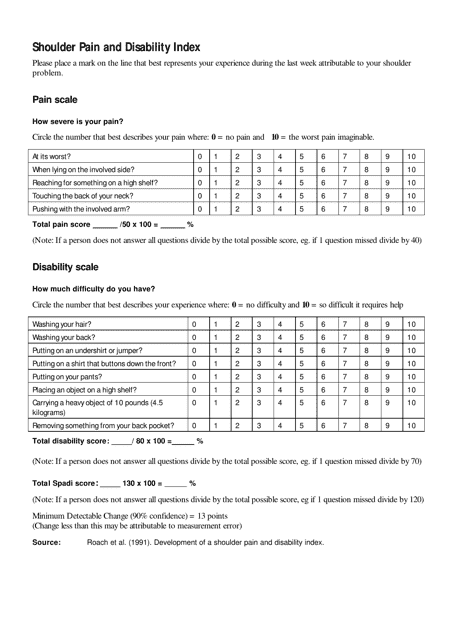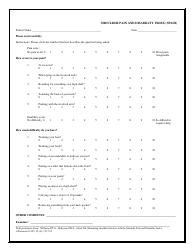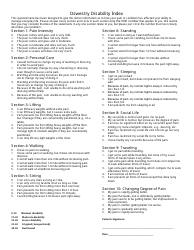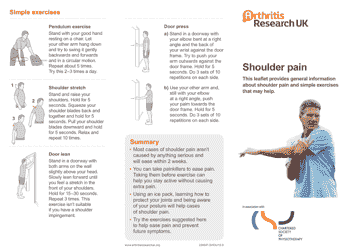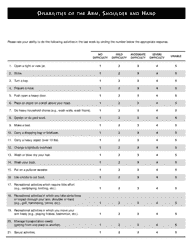Shoulder Pain and Disability Index
The Shoulder Pain and Disability Index is used to assess and measure the severity of shoulder pain and the impact it has on a person's ability to perform daily activities. It helps healthcare professionals evaluate the effectiveness of treatments and monitor progress in managing shoulder pain and improving function.
The Shoulder Pain and Disability Index is typically completed by patients or individuals experiencing shoulder pain and disability.
FAQ
Q: What is the Shoulder Pain and Disability Index?
A: The Shoulder Pain and Disability Index (SPADI) is a questionnaire that measures the extent of shoulder pain and disability in individuals.
Q: Why is the SPADI used?
A: The SPADI is used to assess the severity of shoulder pain and disability in patients.
Q: How is the SPADI questionnaire administered?
A: The SPADI questionnaire is typically completed by patients themselves or with the help of a healthcare professional.
Q: What does the SPADI questionnaire consist of?
A: The SPADI questionnaire consists of 13 items related to pain and disability in the shoulder.
Q: What can the SPADI score indicate?
A: The SPADI score can indicate the level of pain and functional limitation in the shoulder.
Q: How are SPADI scores interpreted?
A: Higher SPADI scores indicate greater pain and disability in the shoulder.
Q: Is the SPADI questionnaire specific to shoulder conditions?
A: Yes, the SPADI questionnaire is specifically designed to assess shoulder pain and disability.
Q: Can the SPADI be used for both research and clinical purposes?
A: Yes, the SPADI can be used in both research and clinical settings to evaluate shoulder pain and disability.
Q: Is the SPADI available for public use?
A: Yes, the SPADI questionnaire is available for public use and can be obtained from various sources.
Q: Is the SPADI suitable for all populations?
A: The SPADI is suitable for adults with shoulder pain, but may not be appropriate for children or individuals with cognitive impairments.
